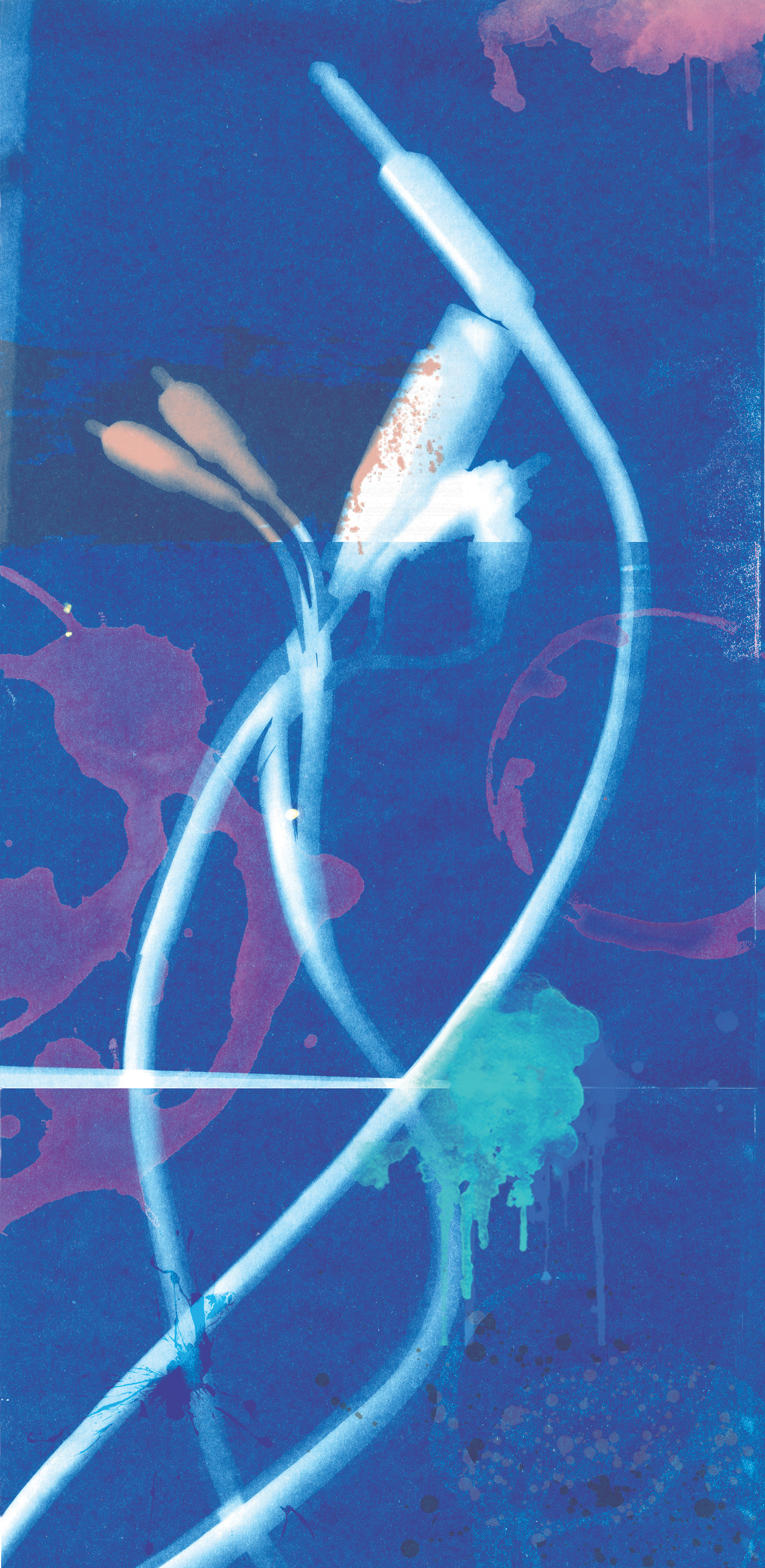Earthworks has made well-regarded condenser microphones for over 20 years. I've been curious about their drum mics for quite a while, so I was stoked to receive a CMK4 mic kit for review. The CMK4 kit provides four DM20 mics and clips inside a Pelican style suitcase. The DM20 is the latest evolution of Earthworks' series of condenser mics designed for close placement on drums (it replaces the DP30/C, which was more expensive with a higher output). Physically it resembles a Shure Beta 98AMP: the capsule lives in a tiny right angle "snoot" head, which is mounted on a sturdy but thin 5-inch gooseneck, which is connected to a stainless steel base that's the size of an average small diaphragm condenser. The included mic clip is the Earthworks RM1 RimMount, which clamps onto a drum rim, so no stand is required.
Rather than do any tests first, I pulled the mics out of the shipping box and put them right to work recording Pinto's Slunk LP at Sharkbite Studios. We set up the band in the live room without headphones, and I mounted DM20's on drummer Scott Cook's vintage Ludwig Club Date kit with a 12-inch rack tom, and two floor toms (14 and 16-inches). I've used the LP Drum Claws a lot, so I know that the "no stands" thing isn't always the paradise you'd like it to be; rim mounts are fussy to reposition in their own way. This was similarly true for the RM1s. If you like your tom mics close to the drum (I do), it takes some maneuvering; one might be tempted to have the gooseneck come straight up off the base and curve over the drum in one dimension, but in fact it's often easier to bend it sideways and point the mic over the neighboring lug. That said, the DM20's goosenecks hold their position surprisingly well, and using fewer mic stands is nice – especially in most studios where there's an eternal shortage of working short stands (if you record rock music, buy 12 shorties and four tall stands, not the other way around)! We got great sounds quickly, and got right to tracking, but a few songs in we were surprised to see that the mics themselves had slipped down in their clips! Gravity and vibration were too much, and the clip couldn't hold the mics' smooth stainless steel base vertically. We repositioned the mics and got back to work, but after another slip or two, I gaff taped the mics to their clips. At mix time I didn't have do much at all; the toms sounded superb. I did clean up the tom tracks in Pro Tools, "hand gating" them, which I do for most records as it reduces cymbal wash, sympathetic "singing" toms, and phase issues – even though it's boring work it beats fucking with noise gates! For the Pinto record I almost skipped this step because we weren't going for super clean drum sounds, and because the bleed sounded good! With three toms, bleed was present for sure, but it provided a solid, crisp picture of the hi-hat and ride cymbal, and Scott's playing is very controlled so there was no cymbal bashing to contend with. But after a quick internal debate, I hand-cleaned the tom tracks. After that, I needed very little EQ, and no compression or transient shaping. Nice!
Finally, I did some testing in isolation without the pressure of a session. Assisted by my 12-year-old son (Q: "Dad, how long will this take?" A: "Steve Albini uses these mics on every session!"), I set up my Ludwig Classic Maple kit with a Black Beauty snare, then mic'd the snare with a DM20 and a Shure SM57, then the toms with a DM20, Josephson e22S, and the venerable Sennheiser MD 421. This was immediately educational. On snare the SM57 and DM20 were vastly different. The DM20 sounded like I had added a bottom snare mic thanks to the extended top end (the DM20 frequency plot shows a bump at 10 kHz, particularly behind the mic, and you can hear it), and lack of 3 kHz bump. Again, more and brighter bleed, but classy sounding. On toms the DM20 sounds like a "condenser 421" if that makes sense – smoother midrange and brighter overall, with similar low end, and much nicer-sounding (but also louder and brighter) bleed. Unlike some other condensers, the DM20 handles high SPLs easily, and its output is still reasonable, so it doesn't crush preamp inputs. The Josephson e22S is still the unbeatable boss to my ears, but at over three times the price it's not really a fair fight. The DM20 held its own, and I'd choose it over a Sennheiser 421 in many cases. Other obvious mics to compare against the DM20 would be Shure Beta 98s, Beta98As, or Beta98AMPs. Unfortunately, I don't own any of those! If you've done such a comparison, let me know how it went. Earthworks mics are made in the US, and the DM20 has an impressive 10-year warranty.




_disp_horizontal_bw.jpg)